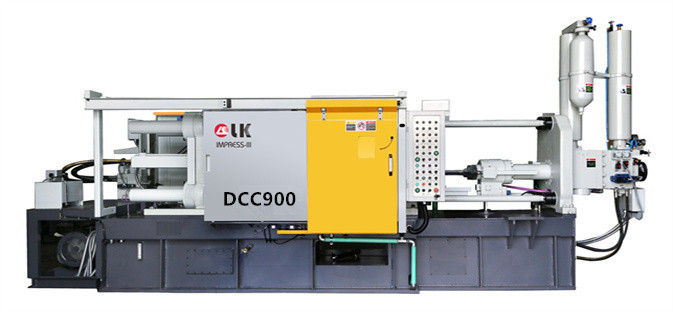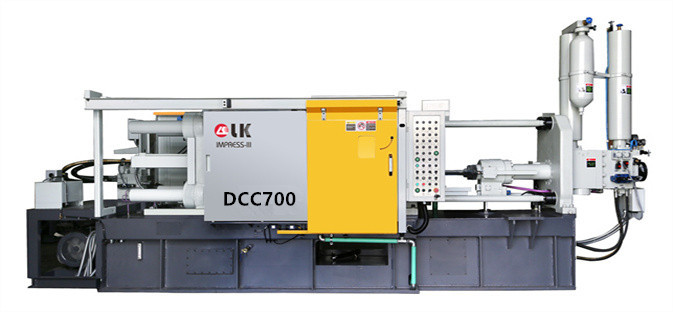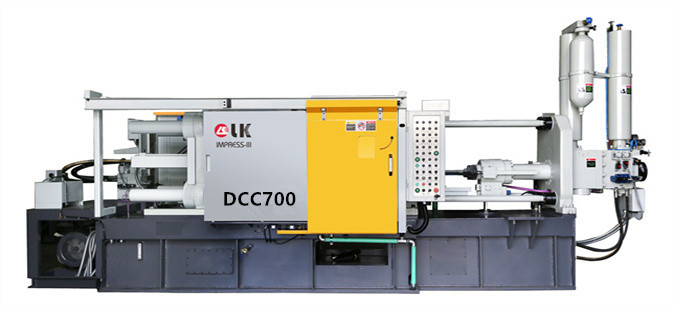The Best Way to Make Near Net Shapes is Die Casting
LK Die Casting Machine / 2024-07-04 15:42:06
Introduction
Near Net Shape (NNS) manufacturing technology plays an important role in modern industry. By reducing material waste and processing time, this technology significantly improves production efficiency and cost-effectiveness. Among the
many near-net shape manufacturing methods, die casting has become the best choice with its excellent performance and wide application. This article will deeply explore the advantages, principles, processes, and applications of die casting
in near-net shape manufacturing.
Introduction to Die Casting
Die Casting is a metal-forming process that occurs by injecting molten metal into a mold and rapidly cooling it. This method can efficiently produce complex-shaped, high-precision, and high-quality metal parts. The die-casting process mainly
includes two types: high-pressure die casting and low-pressure die casting.

1. High-pressure die casting
High-pressure die casting uses high pressure to inject molten metal into a steel mold, which is suitable for large-scale production of complex-shaped metal parts. This method has high productivity, excellent surface finish, and dimensional
accuracy.
2. Low-pressure die casting
Low-pressure die casting injects molten metal into the mold at low pressure, which is suitable for the production of small and medium-sized parts. Although the production speed is low, it can provide better metal fluidity and fewer pore
defects.
Advantages of die-casting
1. High-precision and complex shapes
Die casting can produce metal parts with high precision and complex shapes, reducing the need for subsequent processing. This is essential for near-net shape
manufacturing, which can minimize material waste and processing time.
2. High production efficiency
The die-casting process has extremely high production efficiency and is particularly suitable for mass production. This efficiency is due to its rapid molding
process and level of automation, which can significantly reduce production costs.
3. High material utilization rate
In the die-casting process, the molten metal is formed through the die, and the material utilization rate is very high, which reduces the generation of waste.
This not only saves resources but also reduces production costs.
4. Excellent surface finish
Die castings usually have an excellent surface finish, reducing the need for subsequent surface treatment. This is very important for parts that require a
high-quality appearance, such as automotive and electronic product housings.
Process flow of die-casting
1. Mold design
Mold design is a key step in the die-casting process. High-quality molds can ensure the dimensional accuracy and surface quality of the parts. The mold is usually
made of high-strength steel with good wear resistance and thermal stability.
2. Molten metal preparation
Depending on the required alloy composition, the molten metal is heated to the appropriate temperature in a dedicated furnace. Common die-casting materials include
aluminum, magnesium, zinc, and copper alloys.
3. Injection molding
The molten metal is injected into the mold cavity through the injection system under high pressure. The high pressure ensures that the metal can fill the entire
mold and form the desired shape and details.
4. Cooling and solidification
After the injection is completed, the molten metal cools and solidifies rapidly in the mold. The cooling time depends on the type of metal and the size of the part.
5. Mold opening and part removal
After the metal is completely solidified, the mold is opened and the molded metal part is removed. This process is usually automated, further improving production
efficiency.
6. Post-processing
Although die castings usually have good surface quality, in some cases, certain post-processing is still required, such as deburring, polishing, and painting.

Application of die casting in various industries
Automotive industry
The automotive industry is one of the main application areas of die-casting technology. Die castings are widely used in automobile engines, gearboxes, and body
structures because of their high strength, lightweight, and good dimensional stability.
Electronic industry
Die castings also play an important role in the electronics industry. Many electronic product housings and heat sinks are manufactured using die-casting technology
because they provide excellent thermal conductivity and complex geometries.
Household appliances
Die-casting technology is also widely used in household appliances, such as key components of air conditioners, washing machines, and microwave ovens. Die castings
have excellent mechanical properties and durability, ensuring the high efficiency and long life of household appliances.
Communication equipment
Many components in communication equipment, such as base station housings and antenna brackets, are also manufactured using die-casting technology. Die castings can
provide high strength, lightweight, and excellent heat dissipation performance to meet the stringent requirements of communication equipment.
Innovation and the future
With the advancement of science and technology, die-casting technology is also constantly innovating and developing. The application of new materials, the
optimization of mold design and the improvement of process flow are all driving die-casting technology to a higher level.
Application of new materials
The application of advanced alloy materials and composite materials has significantly improved the performance of die castings. For example, the application of
aluminum-magnesium alloys improve the strength and corrosion resistance of die castings.
Optimization of mold design
Mold design has been greatly optimized through computer-aided design (CAD) and computer simulation technology. Precise mold design ensures high quality and high
precision of die castings.
Improvement of process flow
The application of automation and intelligent technology makes the die-casting process more efficient and stable. The introduction of intelligent manufacturing
systems and robotics have greatly improved production efficiency and product quality.

Conclusion
As the best method for making near-net shapes, die casting has been widely used in many industrial fields due to its high precision, high efficiency, and excellent
surface quality.
With the continuous advancement of technology, die-casting technology will continue to play an important role in the future manufacturing industry.
Through continuous innovation and improvement, die-casting technology will surely bring more possibilities and higher benefits to the manufacturing industry.
In short, die casting is an ideal choice for making near-net shape parts, with significant technical advantages and broad application prospects.
Understanding and mastering die-casting technology is undoubtedly the key to improving product efficiency
and product quality for practitioners and researchers in the modern manufacturing industry.
Contact LK Egypt to learn more info about the die-casting machine
LKAGENT OFFICE DCM
Address: Industry Zone, South of Port Said Kebly, Egypt
https://www.zazdiecasting.com/
Phone: +86 13598704163
Mobile: +20 101 304 3317 +20 150 181 8310
Email: jack@zazmae.com ahmedmahmoud@zazmae.com
#die cast tooling
#trivalent chromate
#rapid prototype casting
#a360 aluminum
#aluminum caster
#aluminum prototype
#ideal 55 slider parts
#density of aluminum kg/mm3
#magnesium sheet metal
#parts of a metal gate
#subcontracting of screw machining for the luxury sector
#wall aluminum
#die casting tooling
#tooling for die casting
#density of aluminium in kg mm3
#clear chromate
#es casting metals
#gating material
#prototype aluminum
#sigma castings
#subcontracting of screw-machining for household appliances
#we squeeze to please machine
#aluminium gravity die casting
#aluminum part
#aluminum rapid prototyping
#nickel casting
#plunger tip for die casting machine
#rapid prototyping aluminium
OTHER CONTENT
-

2024-09-19 14:16:15 LK Cold Chamber Die Casting Machine DCC900 Locking Force: 9000KN Die Height: 400-1000mm Space Between Tie Bars: 930x930mm Shot Weight: 13.5Kg Casting Area Max:2250c㎡
More -

2024-09-19 14:11:06 LK Cold Chamber Die Casting Machine DCC280 Locking Force: 2800KN Die Height: 250-650mm Space Between Tie Bars: 560x560mm Shot Weight: 2.9Kg Casting Area Max:700c㎡
More -

2024-09-19 10:23:07 LK Cold Chamber Die Casting Machine DCC580 Locking Force: 5000KN Die Heigh: 350-850mm Space Between Tie Bars: 760x760mm Shot Weight: 6.9Kg Casting Area Max:1250c㎡
More -

2024-09-19 10:11:20 LK Cold Chamber Die Casting Machine DCC400 Locking Force: 4000KN Die Height: 300-700mm Space Between Tie Bars: 669x669mm Shot Weight: 4.7Kg Casting Area Max:1000c㎡
More

